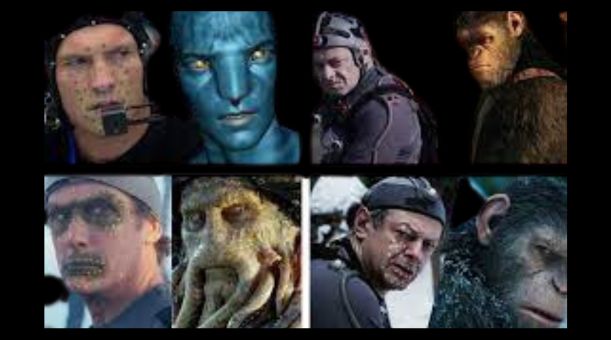Computer Generated Imagery, commonly known as CGI, is a technology that has revolutionized how images and graphics are created and used in various industries.
It involves using computer software and tools to generate realistic or stylized 3D or 2D images, animations, and visual effects that can be used in movies, video games, product design, architecture, and advertising, among others.
In this article, we will explore the world of CGI in detail, including its benefits, limitations, and impact on various industries. We will also discuss the tools and techniques used in creating CGI, the skills required to become a successful CGI professional, and the ethical considerations that should be considered when using CGI in different applications.
What is Computer Generated Imagery (CGI)?

Computer-generated imagery (CGI) uses computer software and tools to create 2D or 3D images, animations, and visual effects. Technology has revolutionized how images and graphics are created and used in various industries, including movies, video games, product design, architecture, and advertising.
What is the difference between 2D and 3D CGI?
The main difference between 2D and 3D CGI is the dimensionality of the image or animation.
2D CGI is a type of computer-generated imagery that creates flat, two-dimensional images. It is commonly used in applications like graphic design, animation, and video games. Examples of 2D CGI include logos, vector graphics, and flat animations.
3D CGI is a type of computer-generated imagery that creates three-dimensional images or animations. It is commonly used in applications like film, television, video games, and architecture. Examples of 3D CGI include lifelike character animations, virtual reality environments, and product visualizations.
While both 2D and 3D CGI involves the use of computer software to create images or animations, the techniques and workflows involved in each can be quite different. 2D CGI typically involves the use of vector or raster graphics software, while 3D CGI typically involves the use of specialized 3D modeling and animation software.
How is CGI created and what software and tools are typically used?
CGI is created using a combination of specialized software and tools. The process typically involves several steps: modeling, texturing, rigging, animation, lighting, and rendering.
Modeling involves creating a 3D model of the object or character that is being depicted in CGI.
This can be done using specialized 3D modeling software like Autodesk Maya, Blender, or 3ds Max. These software packages allow artists to create 3D models by manipulating objects and shapes in a virtual environment.
Texturing involves applying a surface to the 3D model, making it appear more realistic. This is done by adding colors, textures, and other surface details to the model using specialized texture software, such as Substance Painter or Mari.
Rigging involves adding a digital skeleton to the 3D model, allowing it to move and interact with its environment. This is done using rigging software like Autodesk Maya or Maxon Cinema 4D.
Animation involves bringing the 3D model to life, making it move and behave realistically.
This is done using animation software like Autodesk Maya, Maxon Cinema 4D, or SideFX Houdini.
Lighting involves adding lighting and shadows to the 3D model to make it appear more realistic. This is done using specialized lighting software, such as Arnold or V-Ray.
rendering involves exporting the final image or animation from the 3D modeling software into a format for final production. This is typically done using specialized rendering software like Arnold, V-Ray, or Pixar’s Renderman.
Overall, creating CGI is complex and requires technical skills and artistic vision. There are many specialized software packages and tools available to CGI artists, and the choice of software depends on the specific needs of the project and the artist’s preferences and experience.
How does CGI impact the job market for artists and designers?

- CGI (Computer Generated Imagery) has significantly impacted the job market for artists and designers by creating new opportunities and altering the demand for certain skills.
- The use of CGI has led to an increase in demand for 3D modeling, texturing, and animation skills.
- Traditional 2D art skills such as drawing and painting are still important, but proficiency in digital tools such as Photoshop, Maya, and ZBrush are now essential.
- CGI has created new job roles such as 3D modelers, riggers, animators, visual effects artists, and compositors.
- Traditional job roles such as concept artists, art directors, and graphic designers now require a working knowledge of CGI software.
- The rise of CGI has created opportunities in industries such as film, television, video games, advertising, and architecture.
- However, the use of CGI has also led to the outsourcing of jobs and the need for artists and designers to continually update their skills to remain competitive.
what skills are required to become a successful CGI professional?
To become a successful CGI professional, several skills are essential. These include:
- Strong artistic and design skills
- Technical skills
- Problem-solving skills
- Communication skills
- Adaptability
Overall, CGI has created new opportunities for artists and designers, but it requires a combination of technical and artistic skills to succeed in this field.
What are the benefits of CGI in various industries, such as entertainment, architecture, and product design?
The benefits of using CGI in various industries are numerous, and they vary depending on the specific industry and application. Here are some of the key benefits of using CGI in entertainment, architecture, and product design:
Entertainment:
CGI has revolutionized the entertainment industry by allowing filmmakers and game developers to create breathtaking, lifelike visuals and special effects that were once impossible to achieve using traditional techniques. With CGI, filmmakers and game developers can create entire worlds, creatures, and characters limited only by their imaginations, allowing them to tell stories and create experiences that are truly immersive and unforgettable.
Architecture:
CGI has become an essential tool in the architecture industry, enabling architects and designers to create highly realistic 3D visualizations of buildings and spaces before they are built. This allows clients and stakeholders to see and experience the design in a way that 2D drawings or physical models cannot provide, and it helps architects to make informed design decisions based on how the space will look and feel in real life.
Product design:
CGI is also used extensively in product design, enabling designers to create highly realistic 3D models of products that can be tested and refined before manufacturing. This helps to save time and money, as designers can identify and address design flaws or manufacturing issues early in the design process. CGI also allows designers to showcase their products in highly realistic and visually engaging ways, which can be especially useful in marketing and advertising.
Conclusion
Computer-generated imagery (CGI) has become integral to many industries, including entertainment, architecture, and product design. With advanced software and techniques, CGI has allowed creators to push the boundaries of what is possible in terms of visual storytelling, design, and communication.
It has revolutionized the entertainment industry by enabling filmmakers and game developers to create stunning and immersive visuals and special effects, while in architecture and product design, it has allowed professionals to create realistic 3D models of buildings and products that can be tested and refined before they are built or manufactured.
While CGI has led to changes in the job market for artists and designers, it has also created new opportunities for those with expertise in CGI software and techniques. Overall, the impact of CGI continues to be felt across various industries and applications, and its possibilities are limited only by our imagination and creativity.
